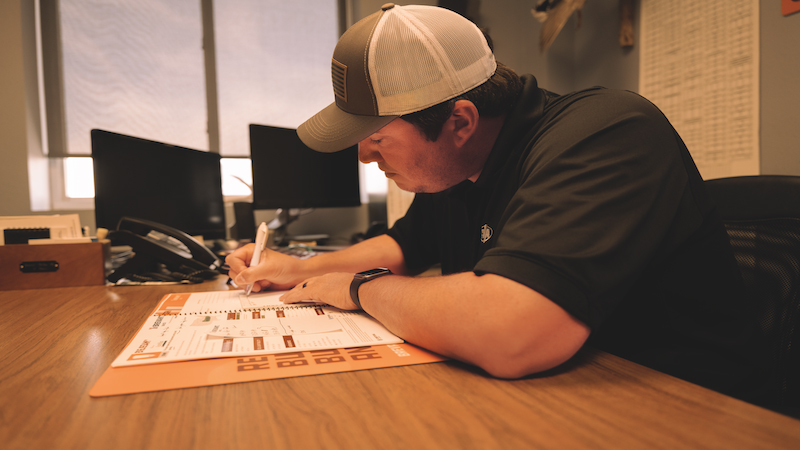The Economics of Disease and Fungicides Don’t Just Start and End with Yield
It seems like fungicides used to be a taboo word on many farms 20 years ago. But since then, a lot has changed in regard to the foliar disease segment.
According to the USDA NASS, from 2010 to 2018 U.S. corn acres applied with a fungicide rose from 8% to 17% – a 112.5% increase. All things considered, that’s a big jump in a small amount of time. This leads to the question: what is driving the growth?
There are a myriad of factors powering the “why we use a fungicide” conversation with a grower. They want help enhancing plant health, slowing down the disease curve, and securing yields. What it boils down to is reducing economic losses due to foliar diseases. This is the why corn growers are turning to fungicides for help.
A Greater Understanding
As awareness of yield-robbing pathogens has grown among U.S. corn growers and consultants, so has their understanding of the benefits fungicides offer. As an industry, our grasp on plant pathology and the study of these diseases has also helped fuel a lot of this progression. It seems like pretty much everyone I talk to can now recite the disease triangle from memory.
What’s also bolstering the growth of fungicide usage is our ability to quantify the effect on an operations’ overall health and crop yield due to disease, as well as the ability to show the direct results and value of a fungicide.
So, how much will foliar fungicides affect crop yield? This is a common question retailers and I are hearing every day from corn growers. In 2020, the Crop Protection Network estimated that foliar diseases caused U.S. corn growers to lose 286.5 million bushels.
Depending on the disease, we see varying effects on yield if a fungicide is not applied:
- Southern rust can have as much as a 20-bushel per acre impact or larger depending on the year.
- Gray leaf spot, which I call the silent killer, is more widespread than many other diseases. If there is a 10-15% severity throughout the canopy, it can result in a 10-15-bushel per acre loss.
- Northern corn leaf blight is not as widespread as gray leaf spot but can pack just as much of a punch. Under certain conditions, especially wet weather, the disease can become aggressive and generate a 30-50% yield loss.
- Tar spot, a newer disease, can create varying yield loss scenarios, ranging from a minimal effect to 50-bushel per acre losses in severe cases.
Calculating the Other Costs Associated with Disease
Ask yourself, how much money did my grower make because of this decision? We look at costs related to inputs, applications, surfactants, and foliar feeds, but it’s important to evaluate the ROI growers receive when applying a fungicide.
Outside of controlling disease, fungicides are critical in improving the overall health of a plant, its standability, harvestability, and crop quality. It’s worth noting that the emphasis on plant health is gaining traction due to the emergence of more late season diseases like tar spot.
Crop protection companies have introduced systemic fungicides, such as FMC’s Xyway brand fungicides, in the marketplace that deliver not only the yield protection, but these other aspects related to plant condition (e.g. improved stalk and root strength). Simply put, there are many benefits associated with a fungicide, outside of yield, that can have a clear-cut, positive ROI, even if an aggressive disease isn’t present in the field.
Timing Is Everything
Say in the circumstance we’ve done everything right and our grower has bought in on using a fungicide. There’s still one factor that makes or breaks the economics of this tactic: timing.
Application timing is one of the most critical pieces to ensure a corn crop experiences the full benefits of a fungicide. Too early or too late on the application, and disease can burn up the economic opportunity in a corn field.
We saw the barriers to timing a fungicide application just right bubble up in 2021. It became a challenge as we saw an influx of growers decide to apply a fungicide due to positive corn prices. This meant aerial applicators were bogged down by demand and delayed in spraying some areas of the Corn Belt. It resulted in a number of acres not receiving the necessary application at the right time to help out or maximize a field’s opportunity.
It’s imperative to remember that timing a fungicide correctly changes from year to year. We need to work closely with our growers to monitor and assess disease progression throughout the season. When in doubt, err on the side of being slightly early. Most fungicide labels suggest growers apply at the onset of disease. Unlike when applying an insecticide for stinkbugs, there are no economic thresholds. There are preventative and curative fungicides, but they all perform better at the onset of disease.
Fungicide Use Trends to Continue
When we look at the yield advancements we’ve made since 2000 (the average corn yield per acre has risen 40 bushels from 2000-2020), there’s a correlation between the increase in average yield and the adoption of fungicides. I believe that without the continued growth of fungicide usage, we wouldn’t be in position we are today nor seeing the same yield levels.
As we work with growers this season and beyond to build crop management programs that deliver the best ROI possible, implore your growers who have bought into the use of fungicides to keep investing in the approach and try new concepts and tools. For those who are still on the fence, encourage them to select their most affected fields or acres to demo a fungicide. When it comes to converting the non-believers, well, seeing is always the best way to create belief.






